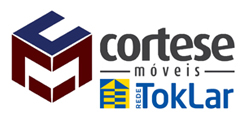Building upon the foundational insights presented in Understanding Probability: From Foundations to Real-World Examples, this article explores how probabilistic thinking influences our everyday decisions. From risk assessments we perform unconsciously to the conscious calculations that shape major life choices, probability is woven into the fabric of daily human behavior. By examining these processes, we can better understand how to improve decision-making and recognize common pitfalls rooted in human cognition.
1. The Influence of Probabilistic Thinking on Everyday Risk Assessment
a. How do we unconsciously evaluate risks based on probability?
Most daily risk assessments occur automatically, guided by our subconscious processing of probabilistic cues. For example, when crossing the street, we instinctively gauge the likelihood of oncoming traffic and decide whether it’s safe to proceed. This rapid evaluation relies on mental shortcuts, or heuristics, that estimate risk based on past experiences and visual cues. Studies show that people tend to overestimate rare but dramatic events (like airplane crashes) while underestimating more common risks (such as car accidents), illustrating how perception of probability often diverges from statistical reality.
b. The role of heuristics and biases in probabilistic decision-making
Heuristics such as the availability heuristic—judging the probability of events based on how easily examples come to mind—significantly influence risk perception. For instance, after hearing about a shark attack, individuals may overestimate the danger of swimming in the ocean. Confirmation bias further skews our understanding, leading us to focus on information that supports our existing beliefs about risks. Recognizing these cognitive biases is crucial for developing more accurate risk assessments in daily life.
c. Examples of risk assessment in common daily scenarios
- Deciding whether to carry an umbrella based on weather forecasts that assign a probability of rain
- Choosing to wear a seatbelt considering the statistical likelihood of accidents in your driving area
- Opting to vaccinate based on the perceived risk of side effects versus protection against disease
2. Probability and Personal Decision-Making: From Choices to Outcomes
a. How do individuals incorporate probability when making personal decisions?
People often subconsciously weigh probabilities when making personal choices. For example, an investor might evaluate the likelihood of market gains before purchasing stocks, while a person deciding whether to start a new exercise regimen considers the chances of success versus failure. Research indicates that successful decision-makers tend to be better at estimating actual probabilities and integrating them into their choices, rather than relying solely on emotions or anecdotal evidence.
b. The impact of perceived likelihood on choices such as health, finance, and safety
Perception of likelihood significantly influences behaviors. For instance, individuals who perceive a high risk of health issues may pursue preventive measures like screenings or lifestyle changes. Conversely, overconfidence in personal safety—such as believing one is unlikely to experience financial fraud—can lead to neglecting protective actions. Understanding how perception aligns or misaligns with statistical realities can help individuals make more informed choices.
c. Strategies for improving personal decision-making under uncertainty
- Education: Gaining literacy in probability reduces misconceptions and biased judgments.
- Decision tools: Utilizing risk calculators and statistical models to evaluate options more objectively.
- Reflection: Deliberate consideration of evidence and alternative outcomes before acting.
3. The Psychology of Probability: Understanding Human Intuition and Misjudgments
a. Common cognitive biases related to probability (e.g., overconfidence, gambler’s fallacy)
Overconfidence bias leads individuals to overestimate their knowledge or control over risky situations, often resulting in risky behaviors like gambling or reckless driving. The gambler’s fallacy—the belief that past outcomes influence future probabilities—causes people to expect a change in random sequences, such as believing a coin flip is “due” to land on heads after several tails. These biases distort our perception of true probabilities and can lead to poor decisions.
b. How intuition can mislead our perception of likelihoods
Intuitive judgments are susceptible to emotional and cognitive distortions. For example, vivid stories or media coverage can inflate the perceived probability of rare events like terrorist attacks, while ignoring broader statistical data. This disconnect between intuition and reality often results in overestimating or underestimating risks, emphasizing the need for calibration techniques.
c. Techniques to calibrate intuition with statistical reality
- Statistical literacy: Learning to interpret probabilities and data accurately.
- Experience and feedback: Engaging in decision-making scenarios with feedback to refine intuitive judgments.
- Structured decision frameworks: Applying tools like decision trees to systematically evaluate options.
4. Probabilistic Models in Everyday Life: From Weather Forecasts to Shopping
a. How probabilistic information influences daily activities like planning and shopping
Weather forecasts exemplify the use of probabilistic data—such as a 70% chance of rain—guiding decisions like carrying an umbrella or rescheduling outdoor plans. Similarly, shopping decisions often depend on sales probabilities, product reviews, and estimated benefits, reflecting how probabilistic models shape routine choices.
b. The importance of understanding probabilities in interpreting forecasts and advertisements
Misinterpretation of probabilistic information can lead to overconfidence or unnecessary caution. For example, an advertisement claiming a “95% success rate” might obscure the context or sample size, misleading consumers. Recognizing the meaning of probabilities and their limitations helps in making more rational choices based on such information.
c. Examples of decision-making based on probabilistic models in routine tasks
| Scenario | Decision | Probabilistic Factor |
|---|---|---|
| Choosing a route to avoid traffic based on real-time congestion data | Selecting the quickest route | Predicted traffic probabilities |
| Deciding to buy insurance after evaluating risk statistics | Purchasing coverage | Likelihood of adverse events |
| Planning outdoor events considering weather forecasts | Scheduling or rescheduling activities | Chance of rain or sunshine |
5. The Role of Technology and Data in Shaping Probabilistic Decisions
a. How algorithms and data analytics present probabilistic insights in daily contexts
Algorithms process vast datasets to generate probabilistic predictions, such as personalized health risk assessments or financial forecasts. For instance, credit scoring models estimate the likelihood of loan repayment, influencing lending decisions. These tools harness statistical models to inform user choices, often making complex probability calculations accessible and actionable.
b. The effect of personalized recommendations and risk assessments on choices
Platforms like e-commerce sites analyze user data to recommend products with high probability of satisfaction, subtly guiding purchasing behavior. Similarly, health apps estimate personal risk levels for various conditions, encouraging preventive actions. While these tools enhance decision quality, they also raise concerns about overreliance on algorithmic predictions and privacy.
c. Ethical considerations of relying on probabilistic data in personal decisions
- Bias and fairness: Algorithms may perpetuate biases present in data, affecting decisions about credit, employment, or healthcare.
- Transparency: Users need clarity on how probabilistic insights are generated and used.
- Autonomy: Overdependence on data-driven predictions can diminish individual agency.
6. Enhancing Decision-Making Skills through Probabilistic Literacy
a. Educational approaches to improve understanding of probability in daily life
Incorporating probability concepts into school curricula, from basic statistics to real-world applications, fosters a generation better equipped to interpret probabilistic information. Interactive simulations and decision games can concretize abstract ideas, making learning engaging and practical.
b. Practical tools and techniques for better risk evaluation and decision-making
- Decision trees: Visualize possible outcomes and their probabilities to compare options systematically.
- Bayesian reasoning: Update beliefs based on new evidence to refine probability estimates.
- Risk calculators: Use online tools to quantify potential outcomes and inform choices.
c. Building awareness to avoid pitfalls of probabilistic misconceptions
Recognizing cognitive biases and understanding the limits of intuition help reduce errors. Regularly questioning assumptions, seeking statistical data, and practicing critical thinking are key strategies to develop probabilistic literacy.
7. Connecting Back: From Individual Choices to Broader Societal Impacts
a. How collective decision-making is influenced by probabilistic understanding
Public health policies, environmental strategies, and economic plans rely on collective interpretations of probabilistic data. When communities understand and trust statistical information, they are more likely to support effective interventions, such as vaccination programs or climate action initiatives.
b. The importance of probabilistic literacy for public policy and societal well-being
A society well-versed in probability can better evaluate risks, prioritize resources, and make informed decisions that benefit the collective. Enhancing probabilistic literacy reduces susceptibility to misinformation and fosters resilience against crises rooted in misjudged risks.
c. Reflection on the foundational principles of probability and their real-world relevance
“Understanding the principles of probability transforms how we interpret the world, empowering us to make smarter decisions amid uncertainty.”
From personal choices to societal strategies, probability shapes outcomes in profound ways. By deepening our probabilistic literacy, we equip ourselves to navigate the complexities of daily life with greater confidence and clarity.









